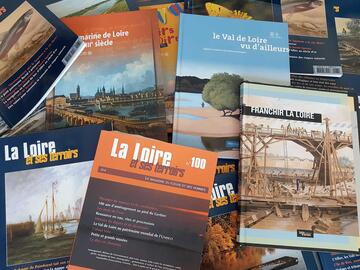
06/03/2025
[Fr] Décès de Philippe Auclerc
C'est avec tristesse que nous avons appris aujourd'hui le décès de Philippe Auclerc, co-fondateur de la maison d'édition "Loire et terroirs" et rédacteur...
Published on 22 December 2010 - Updated 20 April 2012
Cet article date d'il y a plus de 14 ans
Bringing together all of the professionals involved in the life of the Loire Valley, these meetings devoted to the 10th anniversary of the UNESCO listing went back over the beginnings of the listing and provided food for thought on the principles for managing the site and promoting the UNESCO listing in the future.
In the morning, various key figures (scientists, elected representatives, diplomats, etc.) who took part in putting together the Loire Valley inclusion application talked about this experience. The listing rewarded the steps taken by the State and local stakeholders: Plan Loire grandeur nature, Loire-Anjou-Touraine Regional Natural Park, Chinon Architectural, Urban and Landscape Heritage Protection Zone (ZPPAUP) and decentralised cooperation with Luang Pra Bang, etc.
But they nevertheless stressed the fact that the listing was not an automatic attribution. It was granted thanks to the development in the notion of heritage taking into account the cultural heritage and not just an isolated site or monument. It is not in the Loire or the Loire Châteaux alone which UNESCO recognised an outstanding universal value, but in the Loire Valley as a whole, 280 km long, which made it the largest listed site in France.
Moreover, the inclusion application was not initially accepted when it was presented in 1999. The perimeter had to be reviewed and the nuclear power plant sites excluded for the World Heritage Committee to grant its approval in 2000.
Two applicants for inclusion in the World Heritage List came to share their conviction and enthusiasm for this international recognition as a vector of local development.
For the "climats" of Burgundy, Aubert de Villaine and Krystel Lepresle particularly explained the involvement of all the region's stakeholders, especially the economic community, for a "world heritage" policy which, instead of being just another policy, is an across-the-board challenge for public policies.
For the Nord coalfield, Jean-François Caron highlighted the identity-forging role of the listing project to assume the mining heritage with pride: monumental, landscape, social and cultural heritage. With this in mind, the application is relying on the active participation of inhabitants through clubs, meetings, exhibitions, school initiatives and influential events. Anecdotally, the application was launched in the Bollaert stadium in Lens.
The listing is consequently not to be taken for granted, rather, in exchange for international recognition it requires commitment to preservation and enhancement of the site.
The European experiences presented at the beginning of the afternoon shed instructive light on the methods for managing a site, concerning the institutional projects with the case of a cross-border site in particular, as well as on the consideration of such infrastructure projects as a new bridge in the Rhine Valley. The approach taken in the latter case of a competition organised to find the solution for the most successful landscape integration – conducted in partnership with UNESCO – is commendable.
Marina Apaydin, Deputy Director of the World Heritage Centre, was delighted with the work carried out between UNESCO and the Mission Val de Loire since the Loire Valley's inclusion – particularly as regards international cooperation.
Gérard Moisselin, Prefect of the Centre Region and Coordinator of the Plan Loire Grandeur Nature, took stock of how the site management plan was progressing: collection of the opinions of the site's local authorities is coming to an end, with positive contributions and reactions overall. Work on the text is thus set to continue based on the analysis of these opinions.
Jean Germain, Mayor of the City of Tours where the Mission Val de Loire is based, spoke of the local authorities' desire to continue developing in step with the UNESCO listing, which does not "press pause" on the region.
François Bonneau, President of the Centre Region, highlighted the fundamental character of the Loire Valley, a key aspect of the region's identity.
Jacques Auxiette, President of the Pays de la Loire Region and Mission Val de Loire, rounded off the day by further stressing the need to work on the "sense of belonging" to this region marked by the Loire, which will be crystallised in an interpretation centre in Chalonnes-sur-Loire at the site's entrance. A Loire which flows all the way to the estuary in his region, with other remarkable natural and cultural heritages, in an area for which he hoped inspiration would be drawn from the example of the Loire Valley World Heritage. He also talked of the importance of the Mission Val de Loire being a catalyst of energies for the region – rather than an operator.